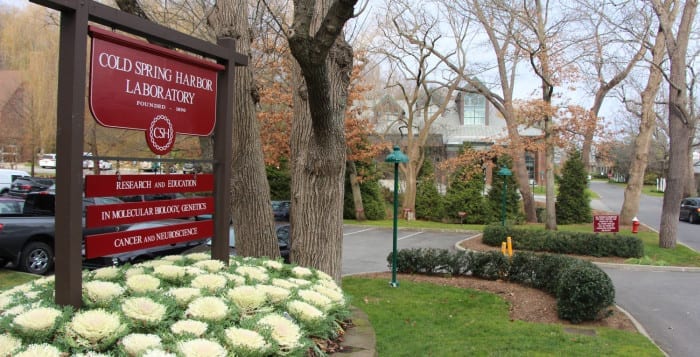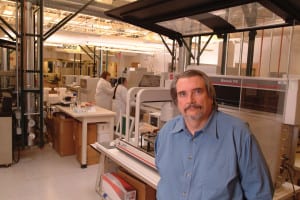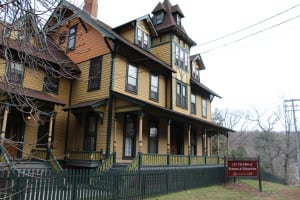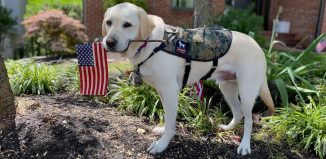CSH Laboratory tests the limits of science

It is not typically a group that gets carried away with praise. Often participants work under controlled conditions, testing results, retesting them and waiting for approval from reviewers.
Yet members of this group heap unrestrained praise on Cold Spring Harbor Laboratory, a facility that looks like a picture-postcard, with boats in the background during the summer and a flourish of foliage in the fall.
“It’s a wonderful scientific environment,” said Dennis Steindler, senior scientist and director of the Neuroscience and Aging Lab at the Jean Mayer USDA Human Nutrition Research Center on Aging at Tufts University. “It represents a very important mecca. It has its own unique environment that fosters creativity and exceptional science.”

This year CSHL, which has been home at one point or another to eight Nobel Prize-winning scientists, is celebrating its 125th year. For the research center’s contributions and its ongoing commitment to producing top-flight research, Times Beacon Record Newspapers names the staff at Cold Spring Harbor Laboratory People of the Year.
Patricia Wright, distinguished service professor of anthropology at Stony Brook University, said CSHL has more than made its mark. “There’s so many things that have come out of that lab that have changed the world,” she said. “Contributing to the human genome project is an important step that is leading to medical genomics which may, one day, prevent diseases before they happen.”
Researchers led by Bruce Stillman — president and chief executive officer of CSHL and a scientist who studies how errors in DNA replication are involved in diseases such as cancer — conduct experiments that may reveal key processes in cancer and autism, branching in plants, neural circuits involved in decision-making and much more. The lab’s research is broken down into five categories: cancer, neuroscience, quantitative biology, plant biology, and bioinformatics-and-genomics. Each of these fields generates research papers every year that not only advance an understanding of basic science, but also offer potential to change the world by taking a novel approach to a disease or increasing plant crop yields.
Zachary Lippman, associate professor at Watson School of Biological Sciences at CSHL, published a paper earlier this year in nature genetics in which he identified a set of genes that controls stem-cell production in tomatoes. Mutations in these genes can explain the origin of the beefsteak tomato, which may help breeders fine-tune fruit size in any fruit-bearing crop.
Gregory Hannon, adjunct professor and investigator at Howard Hughes Medical Institute, meanwhile, teamed up with Associate Professor Michael Schatz, among others, to characterize the entire genome for a flatworm found in Italy that can regenerate almost its entire body after an injury. These results, which were published in an edition of Proceedings of the National Academy of Sciences, a scientific journal, can provide a genetic road map to study the worm and its remarkable regeneration abilities.

These and many other studies published in high-profile scientific journals build on the work done by researchers such as Nobel Prize winner Barbara McClintock, who discovered transposable elements, or jumping genes, in maize.
The people that work at CSHL know, implicitly, that they are “standing on the backs of giants,” said Wright.
Founded in 1890, CSHL made seminal discoveries in science, including a study on hybrid vigor by George Harrison Shull, in which crossbred corn produced some 20 percent higher yields than natural pollination. In the 1940s Milislav Demerec, the lab director, discovered that exposing penicillin to X-rays increased the yield of a drug which was important during World War II. Modern researchers who have spent time at CSHL praise the culture and opportunity.
“Science has always driven things here,” said Richard McCombie, a professor who has been at CSHL since 1992. When he moved to an off-campus building, he recalled Stillman said, “It’ll be up to you guys to make sure the new people are imbued with the culture of the lab.”
Jan Witkowski, executive director of the Banbury Center at CSHL, said the lab is unique because of its combination of research and education.
“One of the most interesting things is this combination of very high level research and very high level of education and communication,” Witkowski said. “There’s no other institute in the world that does both of those things at the level we do it here.”
Giselle Barkley contributed reporting.





